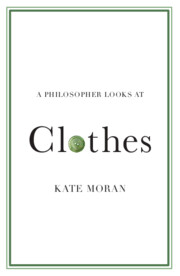Refine search
Actions for selected content:
93 results
Introduction
-
- Book:
- Rebuilding Histories in the Roman World
- Published online:
- 23 November 2025
- Print publication:
- 11 December 2025, pp 1-42
-
- Chapter
- Export citation
Bury Your Friends in the Morning, Protest in the Afternoon, Dance All Night: Imaginaries of Resistance in The Epistemology of Disasters and Social Change
-
- Journal:
- Canadian Journal of Philosophy , FirstView
- Published online by Cambridge University Press:
- 24 November 2025, pp. 1-9
-
- Article
- Export citation
3 - What Is Thanksgiving?
- from Part I - This Is America!
-
- Book:
- Justice, Equity, Diversity, and Inclusion in the United States
- Published online:
- 19 November 2025
- Print publication:
- 30 October 2025, pp 49-74
-
- Chapter
-
- You have access
- Open access
- HTML
- Export citation
Indigenous data sovereignty in intangible cultural heritage governance: A complementary approach to public–private partnerships
-
- Journal:
- International Journal of Cultural Property / Volume 32 / Issue 2 / May 2025
- Published online by Cambridge University Press:
- 13 June 2025, pp. 167-193
-
- Article
-
- You have access
- Open access
- HTML
- Export citation

A Philosopher Looks at Clothes
-
- Published online:
- 08 May 2025
- Print publication:
- 05 June 2025
The sustainability of the commons: giving and receiving
-
- Journal:
- Experimental Economics / Volume 14 / Issue 4 / November 2011
- Published online by Cambridge University Press:
- 14 March 2025, pp. 458-481
-
- Article
- Export citation
Thomas Cranmer’s Appropriation of the Eucharistic Theology of Cyril of Alexandria: The Construction and Defence of a Reformed Agenda
-
- Journal:
- Journal of Anglican Studies / Volume 23 / Issue 2 / November 2025
- Published online by Cambridge University Press:
- 10 March 2025, pp. 369-383
-
- Article
- Export citation
Chapter 12 - Ngundalehla Godotgai: A Bundjalung Version of Waiting for Godot
- from Part III - Missed Translations
-
-
- Book:
- Transnationalism in Irish Literature and Culture
- Published online:
- 13 November 2024
- Print publication:
- 14 November 2024, pp 225-242
-
- Chapter
- Export citation
Chapter 23 - Appropriation
- from Part VI - Reputation and New Contexts
-
-
- Book:
- Robert Lowell In Context
- Published online:
- 28 March 2024
- Print publication:
- 04 April 2024, pp 249-261
-
- Chapter
- Export citation
Chapter 1 - ‘Unser Shakespeare’? The Tercentenary and Germany
-
- Book:
- Shakespeare's Tercentenary
- Published online:
- 13 January 2024
- Print publication:
- 21 December 2023, pp 22-62
-
- Chapter
- Export citation
Introduction
-
- Book:
- Shakespeare's Tercentenary
- Published online:
- 13 January 2024
- Print publication:
- 21 December 2023, pp 1-21
-
- Chapter
- Export citation
Chapter 14 - Romeo and Juliet and Queer Temporality in Three Twenty-first-century Streaming Web-Series
- from Part III - Serial and Queer Romeo and Juliets
-
-
- Book:
- Shakespeare on Screen: Romeo and Juliet
- Published online:
- 10 October 2023
- Print publication:
- 14 December 2023, pp 214-230
-
- Chapter
- Export citation
Chapter 1 - Introduction – From Canon to Queer: Romeo and Juliet on Screen
-
-
- Book:
- Shakespeare on Screen: Romeo and Juliet
- Published online:
- 10 October 2023
- Print publication:
- 14 December 2023, pp 1-30
-
- Chapter
- Export citation
Chapter 8 - Decentring the Hypotext with Denim and Zombies: Jonathan Levine’s Warm Bodies (2013) and David Lachapelle’s Romeo & Juliet (2005)
- from Part II - Extending Genre
-
-
- Book:
- Shakespeare on Screen: Romeo and Juliet
- Published online:
- 10 October 2023
- Print publication:
- 14 December 2023, pp 125-139
-
- Chapter
- Export citation
Chapter 15 - Reviving Juliet and Surviving Romeo in Shakespeare Web-Series
- from Part III - Serial and Queer Romeo and Juliets
-
-
- Book:
- Shakespeare on Screen: Romeo and Juliet
- Published online:
- 10 October 2023
- Print publication:
- 14 December 2023, pp 231-241
-
- Chapter
- Export citation
Appropriation, Opting Out, and the Common Good in Public Debates: An Analysis of Christian Ethical Arguments
-
- Journal:
- Journal of Law and Religion / Volume 38 / Issue 3 / September 2023
- Published online by Cambridge University Press:
- 21 November 2023, pp. 403-416
-
- Article
-
- You have access
- Open access
- HTML
- Export citation
Chapter 19 - The Decolonial Imaginary of Borderlands Shakespeare
- from Part IV - Canon Revisions
-
-
- Book:
- Decolonizing the English Literary Curriculum
- Published online:
- 02 November 2023
- Print publication:
- 09 November 2023, pp 367-385
-
- Chapter
-
- You have access
- Open access
- HTML
- Export citation
Practice of Piety Translated: The Dynamics of the International Circulation of a Devotional Book
-
- Journal:
- Church History / Volume 92 / Issue 3 / September 2023
- Published online by Cambridge University Press:
- 11 December 2023, pp. 559-584
- Print publication:
- September 2023
-
- Article
-
- You have access
- Open access
- HTML
- Export citation
Introduction
-
-
- Book:
- Shakespeare at War
- Published online:
- 17 August 2023
- Print publication:
- 17 August 2023, pp 1-6
-
- Chapter
- Export citation
Chapter 6 - ‘Now for Our Irish Wars’
-
-
- Book:
- Shakespeare at War
- Published online:
- 17 August 2023
- Print publication:
- 17 August 2023, pp 61-70
-
- Chapter
- Export citation
